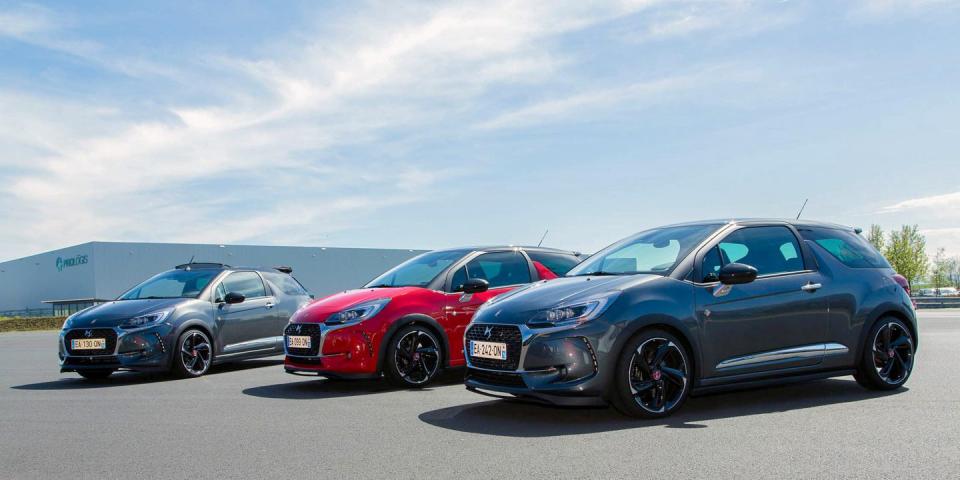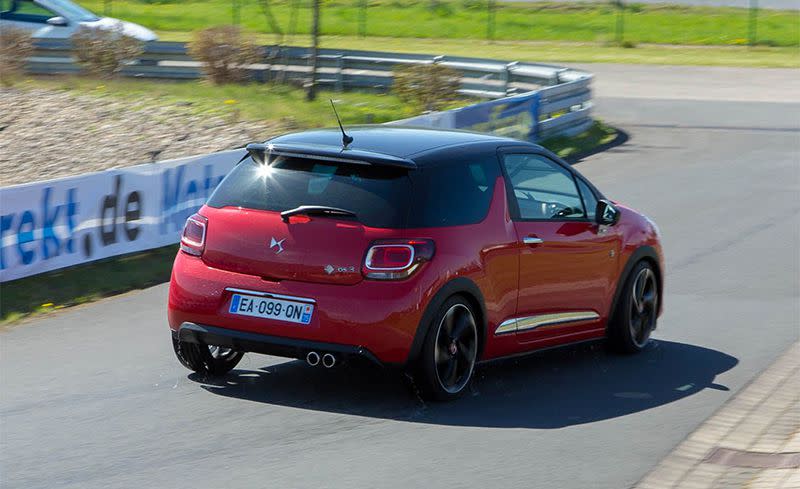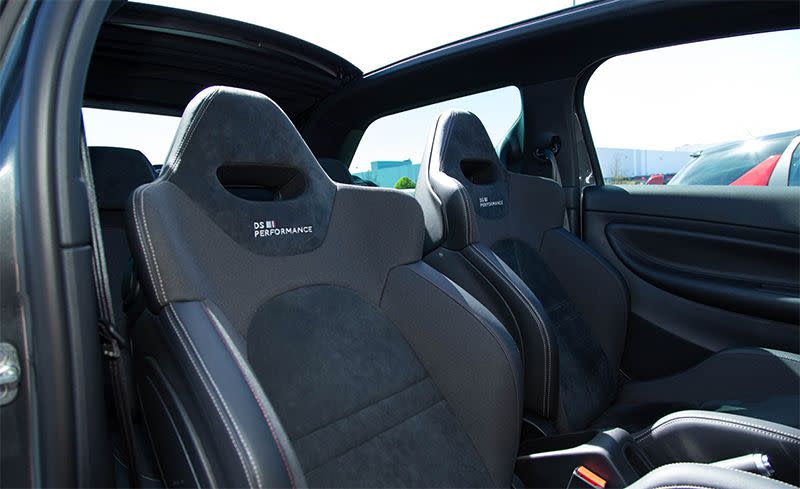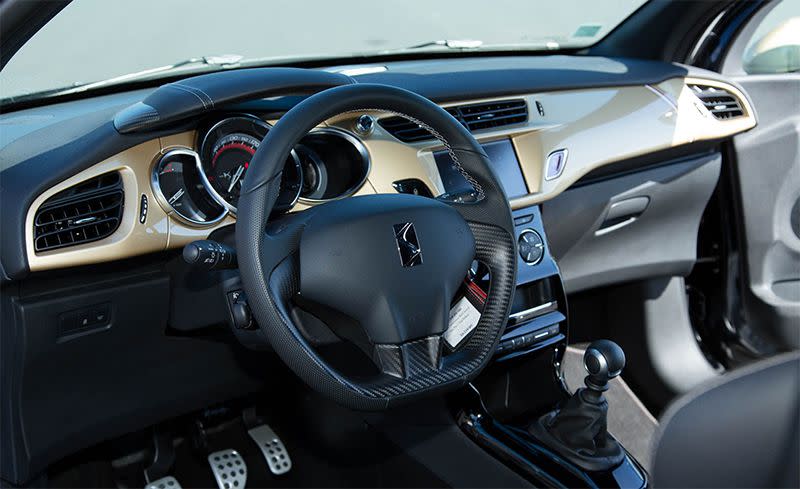citroen-DS3-hatchback-drive

French cars are a thing of the distant past to customers in the United States. Renault went big and swallowed up AMC before choking on Detroit's least competitive carmaker, which it then unloaded to Chrysler; Peugeot's Stateside heyday was around 1980, when diesels were all the rage until they weren't; Citroën's last serious attempt at luring Americans, the futuristic SM, was as successful at that task as you might expect a French-made two-door luxury coupe powered by a Maserati engine.
But the U.S. market continues to tempt our Gallic friends. Groupe PSA, the conglomerate that includes Peugeot, Citroën, the upscale DS Automobiles brand, and Opel/Vauxhall (recently acquired from General Motors), has strongly hinted at the possibility of a return to our shores. Its current lineup is not designed to comply with U.S. regulations, but the automaker's R&D chief confided to us that its next models will be. Intrigued at the prospect, we decided to check out one of its most popular current models, just to get an impression of the DS approach to design and engineering.
Our choice fell to the DS 3 because it represents such a distinctive approach to a minicar. First launched in 2010 under the Citroën brand as the DS3, it has since undergone a few revisions-including being relaunched under the luxurious DS brand. Its advertising campaign took a direct swipe at its chief competitor, BMW's Mini Cooper, with the tagline "Anti Retro." Its styling is modern, with futuristic accents such as a fin-shaped B-pillar and recessed taillights. The DS 3 is designed to appeal to customers who wouldn't be caught dead in a cutesy minicar that shamelessly exploits every British cliché that German marketers could come up with.
Based on PSA's PF1 platform, the DS 3 comes in two body styles: a two-door hatchback and a quasi-convertible with a power-operated fabric top that folds away down to the beltline while maintaining the door frames and pillars, like that of the Fiat 500C. The engine portfolio includes naturally aspirated and turbocharged 1.2-liter inline-threes, a turbocharged 1.6-liter four that was co-developed with BMW (and which powered the second-generation Mini), and a 1.6-liter four-cylinder turbo-diesel.
The 1.6-liter gasoline engine is by far the most impressive. It comes in 155- and 205-hp strengths, and delivers its power with great urgency accompanied by a sporty exhaust note. Throttle response is sharp, and the six-speed manual gearbox has precise throws. We liked this powertrain in the previous-generation Mini, and we like it here. With 205 horsepower in Performance trim, zero to 62 mph takes a claimed 6.5 seconds and vitesse maximum is a lofty 147 mph.
The Performance variant (pictured here) comes with a considerably stiffer suspension, and the little hatchback negotiates corners with precision and minimal body roll-and yet there is still sufficient comfort for long trips. The French are great at building extreme hot hatches, but this one is well-behaved enough to serve as an elegant everyday driver.
With the 109-hp 1.2-liter three-cylinder, the DS 3 loses its performance edge and the suspension tilts toward the softer side. The three-banger has character, and it works especially well with the six-speed automatic. PSA says it will reach 62 mph in 10.8 seconds and top out at 121 mph. The diesel versions suffer from increased noise, vibration, and harshness, but on the plus side, they're very economical and rated for 45 mpg on the European combined cycle.
The DS 3's distinct style carries over from the exterior to the interior. The cabin is clad with high-gloss trim, the cockpit's design still looks modern, the colors of the instrumentation can be modified, and the optional "watchstrap" leather seats are nothing short of spectacular in design and execution. And we love the variety of trim levels and interior schemes, which include "Connected Chic," "Café Racer," and "Ultra Prestige."
The DS 3 is somewhat low on driver-assistance systems-understandable given the car's age. PSA's newer offerings have the usual suite of gadgets and nannies, and we expect this vehicle's successor will, too.
More critically, PSA's full lineup displays a refreshing pattern: All have reasonable and up-to-date powertrains without the excesses of the German competitors, an emphasis on driving comfort, and futuristic, sometimes experimental style at a maximum distance from retro design. None of it is outlandishly weird, as many are wont to stereotype French cars, and in fact, we think stylish, comfortable transport is just what many Americans want. So, to a U.S.-market re-launch of these French brands-and a first-time launch of DS in particular-we say bring it on.
('You Might Also Like',)

 Yahoo Autos
Yahoo Autos 


